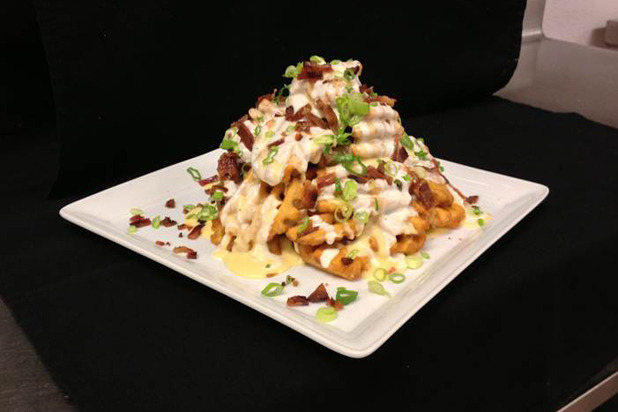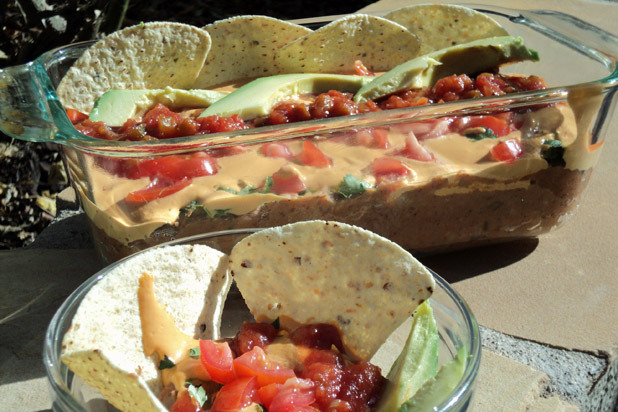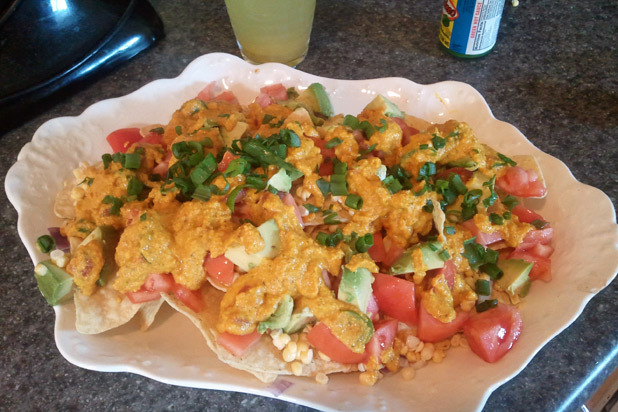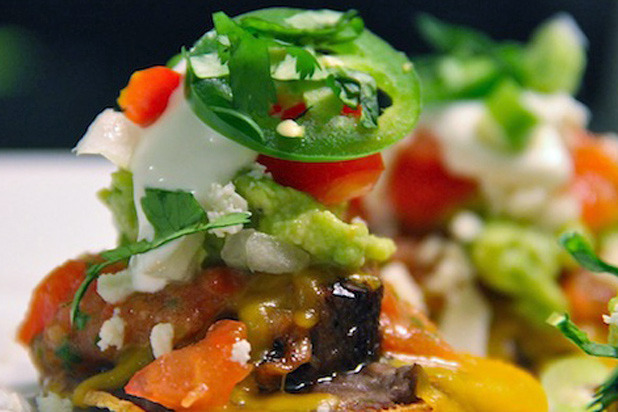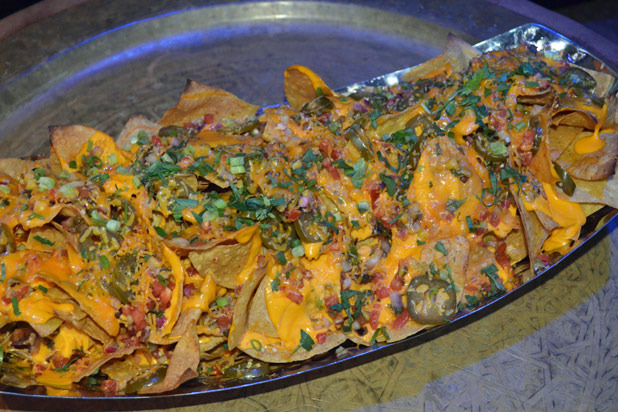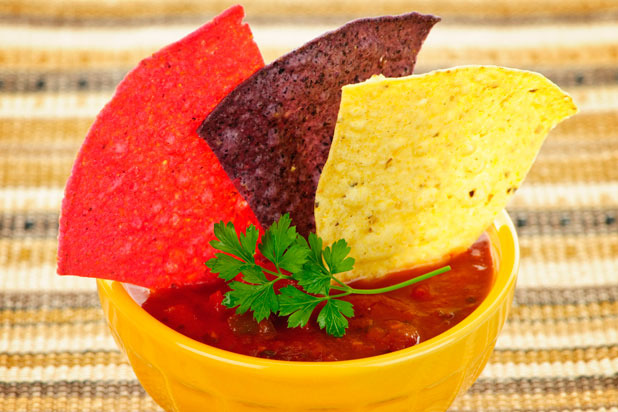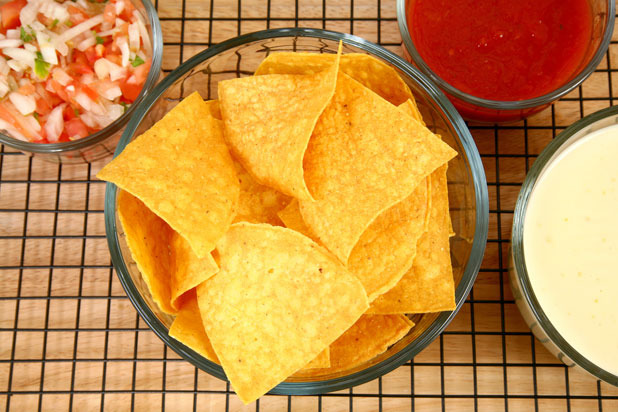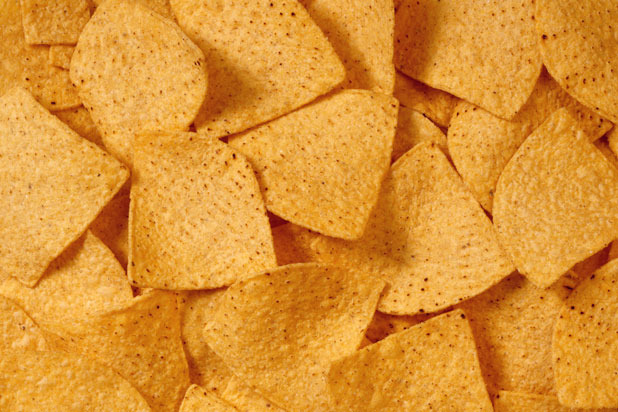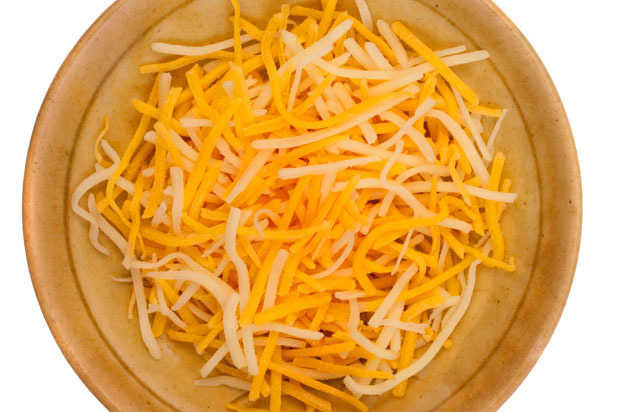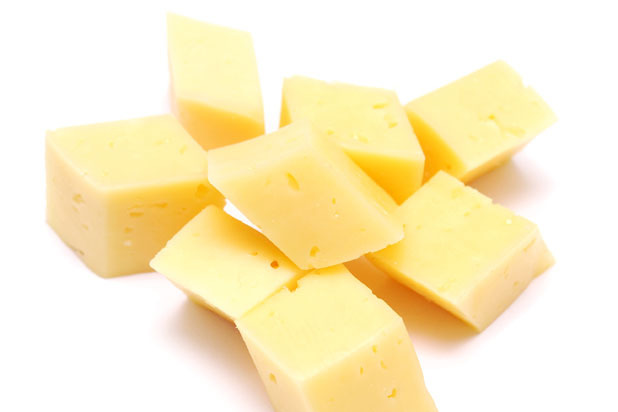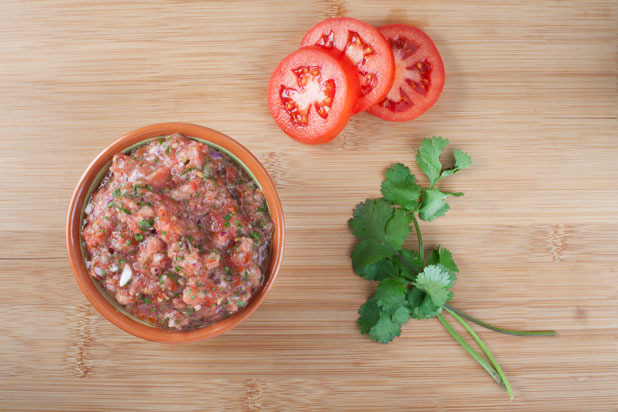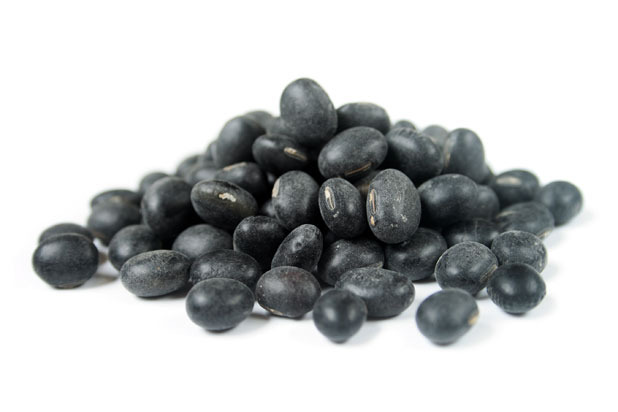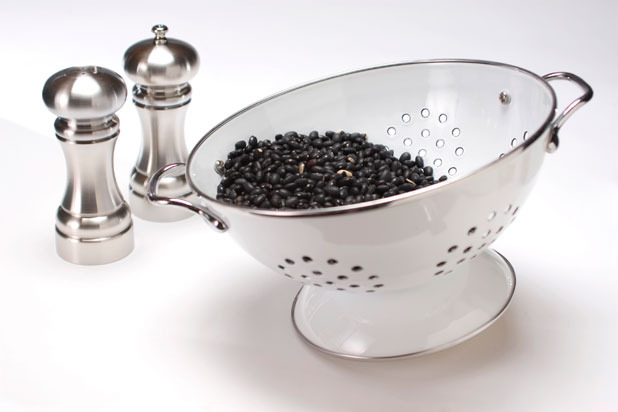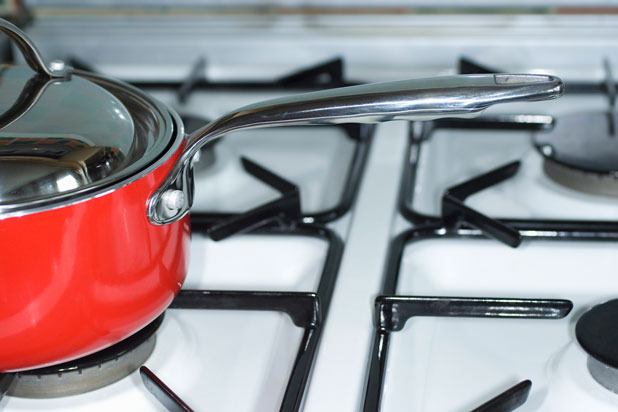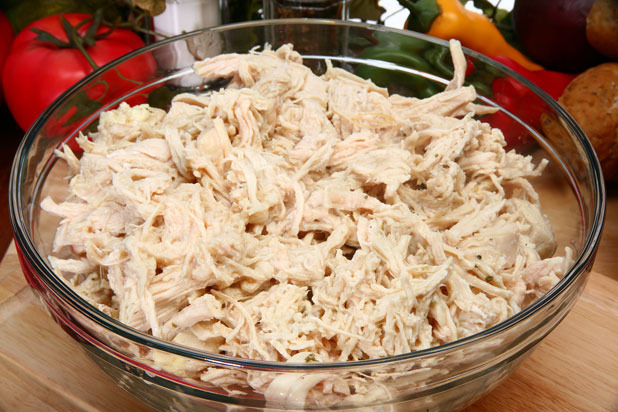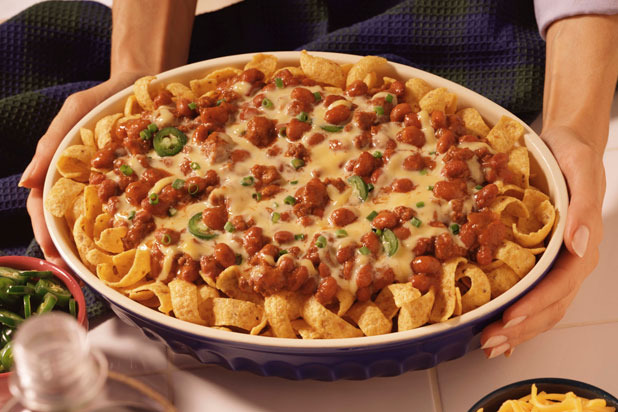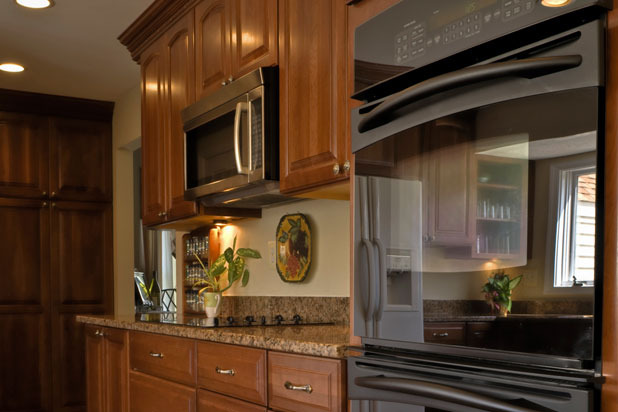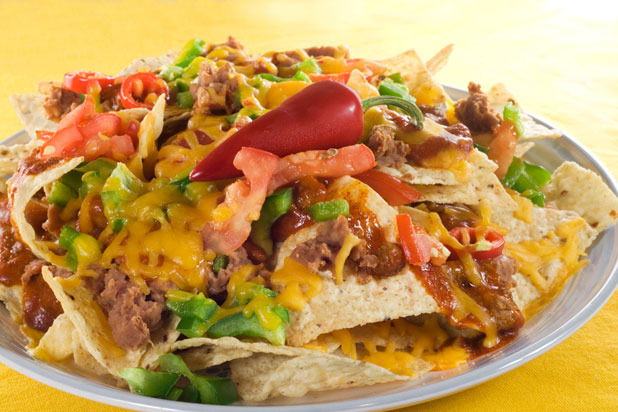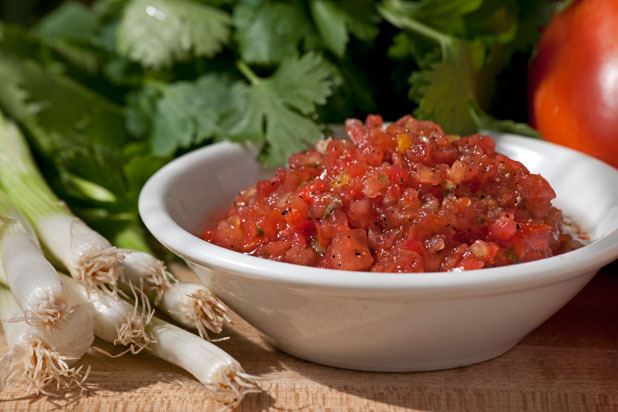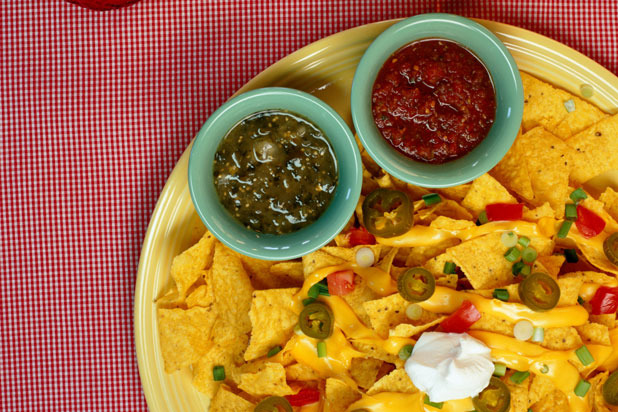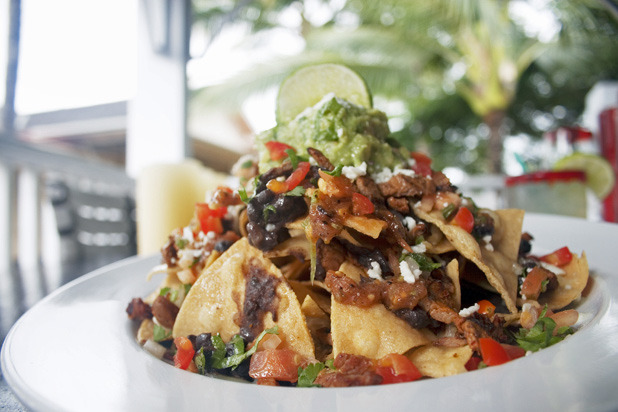The Ultimate Guide To Nachos Slideshow
While this nacho dish may seem to fly in the face of all the lovely advice we've doled out about making nachos, it's not without merit — aesthetics aside, this is downright delicious. Besides, who can resist waffle fries?
Hearty Nachos
These nachos are practically a meal on their own, and they take on a Middle Eastern twist with a little tahini sauce.
Vegan Nachos
A great option for those who aren't into dairy. Give these a shot.
'Healthy' 12-Layer Nachos
Executive editor Arthur Bovino has a soft spot for great nachos. Check out his recipes.
Super Nacho Higante
Chips: What Color?
Braccia prefers white corn tortilla chips over blue or yellow because white cornmeal can be ground more finely, resulting in a thinner chip with a more delicate crunch, which will make for a more pleasurable eating experience when it comes to texture. Store-bought is just fine since there are so many good brands out there, she says.
Chips: Baked or Fried?
What about baked chips? Well, the jury's out on this one. While it might make for a healthier nacho dish, Braccia says that in her experience, some brands taste like parchment paper. If you do find a baked tortilla chip that you like, go ahead and use it — just make sure to pick a high-quality, flavorful cheese that will make up for it because oil carries flavor molecules that help bind the dish together.
Chips: Salted or Unsalted?
If using store-bought chips, choose salted, for sure. That old cooking mantra still applies — season, season, season. If you're frying your own chips, make sure to salt the chips right when they come out of the frying oil, or the salt will just bounce right off the chip.
Cheese: Why Pre-Grated Is Bad
If you're in a pinch and a sudden, uncontrollable urge for a plate of nachos sets in, you may be tempted to use pre-grated cheese. But Braccia finds that manufacturers often don't start with the best-quality cheese when it comes to pre-grated, which is why there often isn't a whole lot of flavor (if any).
Cheese: Best Choice
Instead, start with a block of sharp white Cheddar, which generally has a little bit more of a bite than yellow. If you're using white corn tortilla chips, it's also more pleasing from an aesthetic standpoint, if you care about that sort of thing. But the important takeaway is: Don't use pre-grated cheese, and whatever you use, start with something high-quality.
Salsa
Nothing beats homemade salsa and it's really not that hard to do, but Braccia says that if you absolutely must use store-bought, opt for the salsas in the plastic containers in the refrigerated section rather than the jarred ones in the condiments aisle. They'll taste fresher, have superior texture (jarred versions often have the consistency of tomato sauce), have more flavor, and likely contain fewer preservatives. Fire-roasted is a nice twist as well.
Beans: Canned Versus Dried
Braccia prefers dried beans mainly because of texture. Canned beans often have a mealy, slimy texture, says Braccia, whereas dried beans still have a bit of a bite.
Beans: Cut Out the Gas
When using dried beans, Braccia says to soak them overnight in plenty of water, which helps cut down on any sliminess and also helps cut down on the bloat — a problem that many people often have with beans.
Beans: Best Way to Cook
To cook the beans, Braccia says to boil them in salted water or vegetable stock until tender. At the end of the cooking process, she adds a splash of balsamic vinegar, which also helps cut down on any mealiness, she says.
Meat
Braccia is a fan of chicken, but whatever meat you use, you'll have to cook it separately, of course. When it comes to chicken breast especially, Braccia says that hand-shredded is the way to go. That's because if you cut it with a knife, she says, you'll probably end up cutting it across the grain, and that's not great from a textural standpoint because it will end up being the last thing to break down in your mouth when you bite into the nacho.
Building the Nacho: Bite-Sized
If you're looking for nachos that are individual, bite-sized portions, Braccia says that the last thing you want to do is to throw everything into a casserole dish in a pile of multiple layers. You'll just end up with mush, she says. (If that's what you're looking for, though — nachos meant to be eaten with a spoon rather than with your hands — go right ahead. The nacho police aren't going to stop you.)
Building the Nacho: Air It Out
Braccia says to first preheat the oven to 450 degrees — and if you have a convection oven, use it, because the circulating air will only help the chips stay nice and dry as they bake. Arrange them in a single layer on a baking sheet, making sure they have room away from each other, kind of like when baking cookies. Again, this helps promote air circulation and prevents the nachos from turning soggy.
Building the Nacho: Cheese as "Glue"
If you're just doing cheese, grate it, sprinkle it on, and you're home free. If you're doing multiple layers, she likes to start with about half the cheese, followed by the beans, salsa, sliced jalapeños, and any other ingredients you're using, followed by the remaining cheese. This way, the cheese acts as a "glue" that helps anchor all of the ingredients to the chip, preventing them from sliding off when you take a bite.
Building the Nacho: Parting Advice
If you're using salsa, it's OK to put a little bit on the chip before it goes in the oven, but make sure to dry it thoroughly by letting it drain in a colander first.
Most importantly, though, resist the urge to pile on too much stuff on each chip — nobody wants to be playing Jenga with their nachos.
Dig In!
At last, it's time to serve. Braccia does it simply with a side of salsa and guacamole, but feel free to experiment.
Nachos de la Casa
These are the perfect nachos for anyone who likes to have all the bells and whistles — beans, salsa, ranchera sauce, Monterey Jack cheese, crema, guacamole, pickled jalapeños, queso fresco, and cilantro.
